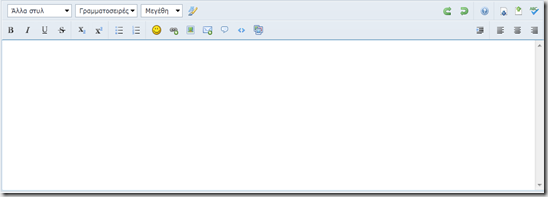I saw one of my students do a crazy thing the other day. He and his friends were watching videos on YouTube but with a twist; before each video started they had had its title changed with the help of Firebug (the Firefox’s extension, which allows you to view and manipulate the DOM of a web page). Clearly, they were extremely happy with the results but they knew it wasn’t a permanent thing.
But what if it could be?
At that very moment, two questions crossed my mind. First, why on earth don’t we just drop the read only nature of web pages? We have excellent tools to play with the DOM and we are comfortable enough with their usage, apparently. Even school kids understand Firebug and Firebug is not a toy, mind you. So, what if we had a Rights Management scheme applied to web pages thus allowing changes by everyone granted with write permissions? But what about dynamic content?
Which –somehow, made me ask the second question. Why do we still use online Content Management Systems?
Back in the desktop PC era we couldn’t afford walking around with our clients. 3Kg of weight was considered a burden too even though laptops was a great step towards mobility. Instead, we’ve decided to move our CMS software online, which enabled us to access it from everywhere without the need of carrying neither our hardware nor software with us.
It was a decision that came with a great price to pay.
Web applications never became (and never will be, I believe) as rich as desktop applications as far as the user interface is concerned. For years and years to come most of us were forced to make with the dreadful but all too common interface shown in Figure 1 and came to even think of it as evolutionary.

Figure 1. Is most online content created with this interface?
Let’s be honest. People have been struggling to make ends meet with such horrible tools for far too long. Just compare it with any of your desktop applications if you dare.
Today we are experiencing the era of very rich, very capable and very mobile hardware clients, all at the same time. I believe it is about time to move the CMS software back to the clients. The notion of “Apps” is a good (and a highly successful) sign towards this trend. The UI is not the only concern. Think of all the security we apply to web applications just because they are available (and vulnerable) to everyone online. What about all the technical stuff people have had to become comfortable with? URLs, proxies, cookies, the stateless nature of the web… Do you remember the browsers’ war?
The web is past its age of innocence. We now have extremely capable, mobile clients we can take advantage of. We have mature and very powerful tools to build even more powerful software that will reside in our clients and will provide us with the best experience of online content management we have ever had. Think of the web as just a facade, a display medium. That’s what it initially was and that’s what it is , still. All the rest can be left to mobile clients to handle.
D. Pantazopoulos, MSc.
Disclaimer: The opinions and ideas expressed in this post are mine and do not necessarily reflect the opinions and ideas of the host (dotnetzone.gr).